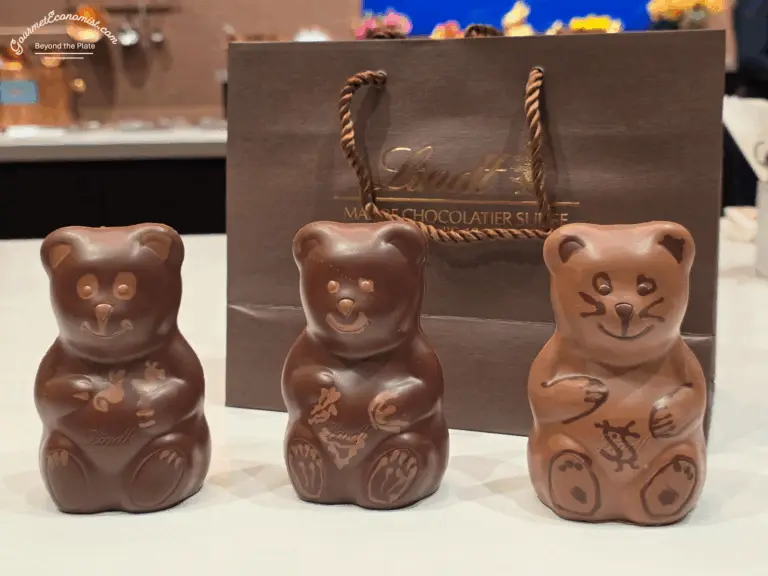Market Structures in Gold Jewelry: From Oligopolies to Monopolistic Competition
In my previous exploration of gold jewelry markets, I examined how different cultures solve the fundamental economic challenge of trust and information asymmetry – whether through Florence’s hallmarking traditions, India’s trusted national brands, or America’s standardized quality tiers. But these trust mechanisms are only part of the story. Gold jewelry, beyond its aesthetic appeal and cultural significance, offers a fascinating case study in industrial organization, where similar products are sold through dramatically different market structures across countries.
The structure of these markets – oligopolistic in urban India, monopolistically competitive in Florence, Italy, and segmented in the United States – creates distinctive incentives for firms, shapes consumer search costs, and ultimately determines how economic surplus is distributed between producers and consumers. Understanding these structures reveals not just how gold jewelry is sold, but how markets naturally organize to balance efficiency, variety, and cultural preferences.

Market Structure Overview
The gold jewelry industry operates under different market structures across countries, which significantly affects pricing and consumer choices. Using the framework of industrial organization, we can analyze these differences:
Oligopolistic Structure in India’s Organized Retail Space
India’s gold jewelry market demonstrates characteristics of an oligopoly in urban areas, particularly with the dominance of branded retailers like Tanishq. According to a report by Motilal Oswal Financial Services, organized jewelry retailers have been steadily increasing their market share in India, though the overall market remains predominantly fragmented with the unorganized sector still accounting for approximately 65% of the market.
This market concentration allows established brands to command price premiums through what economists call “non-price competition” – competing on quality assurance and trust rather than solely on price. As a consumer in this market, I was willing to pay Tanishq’s higher making charges precisely because their brand served as a credible quality guarantee – an economic decision that reflects rational consumer behavior under information asymmetry.
Monopolistic Competition in Italy
The Italian market, particularly in historic centers like Florence, more closely resembles monopolistic competition. The jewelry stores along Ponte Vecchio and throughout Florence’s historic center offer differentiated products with attempts to establish unique brand identities and craftsmanship stories.
This market structure naturally results in higher search costs for consumers, as I experienced firsthand through my extensive research before purchasing in Florence. However, it also creates valuable space for product differentiation and quality competition. Stores can maintain price premiums by emphasizing unique artisanal techniques, historical legacy, or distinctive design elements, which are classic characteristics of monopolistic competition where firms gain price-setting power through product differentiation rather than market dominance.

Monopolistic Competition with Market Leaders in the United States
The U.S. jewelry market is best characterized as monopolistic competition, with some oligopolistic elements in specific segments. Based on the U.S. Census Bureau’s Economic Census data, the industry remains relatively fragmented, with approximately 15,000 retail firms operating over 21,000 jewelry store establishments nationwide (NAICS 448310). This establishment-to-firm ratio indicates that many businesses operate only one or a few locations, highlighting the continued dominance of independent jewelers and regional chains.
Signet Jewelers, the largest jewelry retailer in the U.S. market, holds a market share of 9.0% as documented in their Fiscal 2024 Annual Report. As the parent company of familiar mall-based brands including Kay Jewelers, Zales, and Jared, along with James Allen and Diamonds Direct, Signet has established itself as the most significant player while still commanding less than one-tenth of the total market. This relatively modest market share for the industry leader underscores the competitive nature of the jewelry retail landscape.
The U.S. jewelry market is segmented into distinct arenas, each with unique competitive dynamics. The mass market is dominated by mall-based chains like Signet Jewelers, offering accessible price points and wide retail reach. The mid-tier consists of independent and regional jewelers that emphasize craftsmanship and personalized service. The luxury segment includes heritage brands such as US-based Tiffany & Co. and international players like Cartier, all known for premium design and exclusivity. Meanwhile, digital-native retailers like Blue Nile and Brilliant Earth are reshaping the market with e-commerce-driven models, ethical sourcing, and appeal to younger consumers. These segments face varying levels of market concentration, creating a multi-layered competitive landscape.
This segmentation helps explain why 14-karat gold has become the dominant standard in U.S. jewelry, particularly in the mass market. The standardization of 14-karat gold is less about oligopolistic control and more about consumer preferences and price-point optimization. Rather than resulting from collusion among dominant firms, this norm reflects a market equilibrium that balances durability, affordability, and perceived value.
While ongoing consolidation through acquisitions (like LVMH‘s purchase of Tiffany & Co. and Signet’s acquisition of Diamonds Direct) suggests movement toward greater concentration, the U.S. jewelry market remains fundamentally competitive with significant fragmentation across its various segments.
Price Composition Across Markets
The composition of final retail prices for gold jewelry reveals fascinating economic differences across our three markets. Based on current industry data and my analysis, here’s how the price breaks down:
Raw Gold Value: Generally ranges from 40-65% of the final retail price, with simple bands typically at the higher end and complex designs at the lower end. This percentage varies by jewelry type, purity level, and market positioning.
Making Charges: This craftsmanship fee varies significantly by country:
- India: Commonly 8-20%, with machine-made items at the lower end and handcrafted pieces commanding premium rates.
- Italy: Often 15-30%, reflecting both higher labor costs and the premium for Italian craftsmanship excellence.
- United States: Typically 14-25%, with mass-produced items at the lower end and designer pieces commanding higher percentages.
Taxes: Create substantial pricing disparities:
- India: 3% Goods and Services Tax (GST) on gold value plus 5% on making charges
- Italy: 22% Value Added Tax (VAT) on full retail price, with refund options for non-EU tourists
- United States: Varies by state and locality
Retail Markup: Varies dramatically by market segment:
- Mass-market: 25-35%
- Mid-tier: 35-50%
- Luxury brands: 50-100% or higher
These differences demonstrate classic economic principles in action. The varied pricing structures represent price discrimination strategies across market segments, create different patterns of tax incidence effects, alter the opportunity cost for consumers, and showcase varying productive versus allocative efficiency levels across markets.
Economic Implications of Cultural Preferences
The preference for different gold purities across markets reflects deeper economic principles beyond mere aesthetic choice, revealing how cultural values and institutional contexts create distinct economic equilibria.
India’s 22-Karat Preference: Gold as Store of Value
In Indian markets, the preference for 22-karat gold stems from gold’s role as a store of value and hedge against inflation. According to the World Gold Council’s India Gold Market report, Indian households hold approximately 25,000 tonnes of gold, representing roughly 11% of the global above-ground gold stock. This makes gold jewelry both a consumption good and an investment asset, serving dual purposes as adornment and wealth storage.
The economic rationale becomes clear when considering India’s historical inflation patterns and financial market development. Higher karat gold maintains better resale value and liquidity, functioning essentially as a commodity investment disguised as jewelry. This creates a positive feedback loop: because consumers expect to potentially liquidate their jewelry, they demand higher purity, which in turn maintains the cultural norm and market structure supporting 22-karat gold.
Beyond investment considerations, gold jewelry in India carries deep cultural significance tied to women’s economic autonomy. Traditionally, gold jewelry has served as a form of portable wealth that women could control independently, providing financial security in a patriarchal society. While the dowry system has created complex dynamics around gold ownership, modern Indian women increasingly view their gold jewelry as personal assets rather than family obligations. This cultural evolution reinforces the preference for higher purity gold
American 14-Karat Preference: Optimization Under Different Constraints
The American preference for 14-karat gold reflects different economic constraints and cultural values. In a market with well-developed financial institutions, accessible investment vehicles, and relatively stable currency, jewelry primarily serves aesthetic rather than investment purposes. This shifts the optimization problem from maximizing gold content to maximizing durability per dollar spent.
The 14-karat standard represents the point where marginal utility from additional gold content equals the marginal cost of reduced durability and higher price. For American consumers who view jewelry primarily as fashion rather than wealth storage, 14-karat gold hits the optimal trade-off between appearance, durability, and affordability.
Market Structure Implications
These preferences create self-reinforcing market structures. In India, the investment aspect of gold jewelry supports the branded retailer model – consumers are willing to pay premiums for assurance of purity when the jewelry represents stored wealth. In contrast, American consumers’ focus on design and durability supports market segmentation by price point rather than purity levels.
The Relationship Between Gold Purity and Color
The purity differences across countries create visible color variations that stem from gold alloy composition, affecting both appearance and performance. Pure gold (24-karat) has a rich, bright yellow hue. However, pure gold is soft and not ideal for everyday jewelry. To enhance durability, gold is alloyed with other metals, which also affects its color:
- 24-karat (99.9% pure): Bright, rich yellow color.
- 22-karat (91.7% pure): Slightly lighter yellow, commonly used in Indian jewelry.
- 18-karat (75% pure): Noticeably lighter yellow; may have a reddish tint if alloyed with copper.
- 14-karat (58.3% pure): Significantly lighter, may appear pale yellow or even whitish, depending on the alloy composition.
In the case of white gold, which is popular in Western markets, the gold is alloyed with white metals like nickel or palladium and often plated with rhodium to achieve a bright white appearance. Lower karat white gold, such as 14-karat, requires more rhodium plating to maintain its color compared to higher karat versions.
Rose gold is another example where alloy composition changes the color – it’s made by mixing gold with a higher proportion of copper, resulting in its characteristic pinkish hue. Like yellow and white gold, rose gold also varies in tone depending on the gold purity.
These differences in color and composition influence consumer preferences and market offerings. In the U.S., the preference for durability and affordability has made 14-karat gold the standard, while in India and Italy, the cultural and aesthetic appreciation for the rich color of higher karat gold maintains the popularity of 18-karat and 22-karat gold jewelry.
Conclusion
Across continents and karat counts, gold jewelry markets reveal how cultures build trust, navigate uncertainty, and assign value. Whether through tradition, certification, or branding, these mechanisms solve an age-old problem: how to know what you’re really getting when what you’re buying shines so brightly.
These market differences reflect deeper cultural values that shape economic structures. Italy’s 18-karat preference, backed by centuries-old craftsmanship tradition, speaks to a culture valuing heritage and artisanal excellence. India’s embrace of 22-karat gold through established brands like Tanishq reflects both cultural significance as stored wealth and the importance of institutional trust in a developing economy. The US’s 14-karat standardization in mall-based chains demonstrates a market prioritizing practicality and accessibility.
From India’s brand-dominated oligopoly to Italy’s artisanal monopolistic competition to the US’s segmented retail landscape, each structure creates different equilibria balancing efficiency, variety, and quality. Market structures and trust mechanisms have co-evolved, creating reinforcing ecosystems where consumer experiences tangibly reflect these economic realities.
As economists, we often discuss markets as abstract forces. But in the gleam of gold across these diverse settings, we see how market structures emerge organically to solve economic challenges while accommodating cultural preferences and historical legacies. These structures, like fingerprints, remain unique to each landscape and serve as proof that even in our globalized world, markets stay profoundly shaped by local histories, preferences, and institutions.





